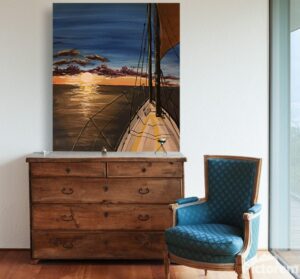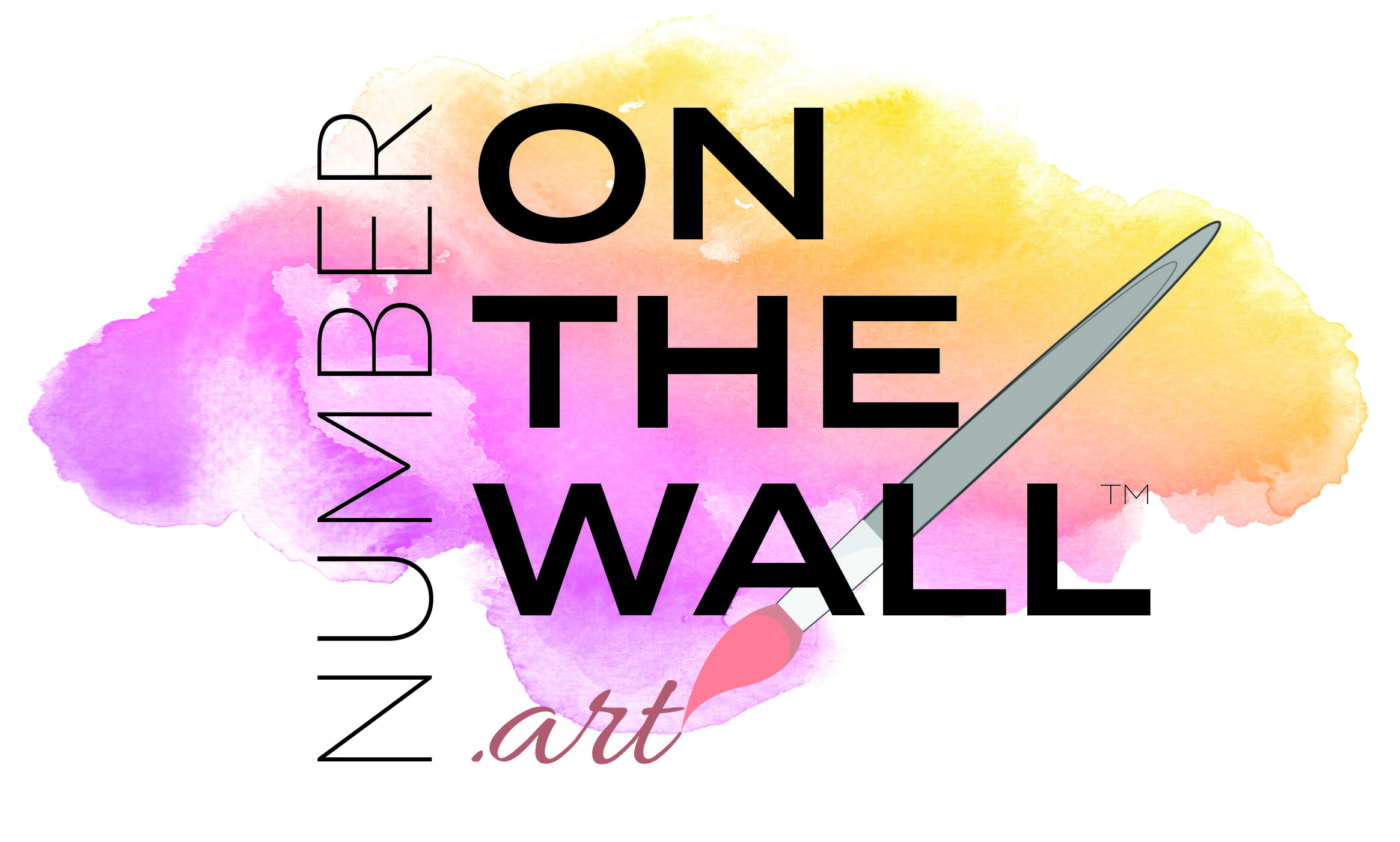The Art of Collecting: 7 Essential Tips for Building a Meaningful and Valuable Art Collection
 Are you an art enthusiast looking to start your own art collection, but unsure where to begin? I was there once myself. I never thought I could be an “art collector” … that seemed to always be reserved for those who were collecting art as an investment, or perhaps for prestige associated of owning work by a particular artist. But through my own art journey, I’ve learned that anyone can be an art collector because we all get to define our own collection goals.
Are you an art enthusiast looking to start your own art collection, but unsure where to begin? I was there once myself. I never thought I could be an “art collector” … that seemed to always be reserved for those who were collecting art as an investment, or perhaps for prestige associated of owning work by a particular artist. But through my own art journey, I’ve learned that anyone can be an art collector because we all get to define our own collection goals.
Embarking on the journey of becoming an “art collector” – which is really anyone who collects art (and by definition I’m also a shoe collector and an ink pen collector and maybe a few other things) – can be both exciting and sometimes overwhelming.
But don’t worry, I’ve got you covered!
In this article, we’ll explore seven essential tips to help you build a meaningful and valuable art collection that reflects your personal taste and style.
Don’t think that you have to spend tens of thousands of dollars to purchase original art, and that it must hang on the walls in a multi-million-dollar mansion with special lighting features. You become an art collector with your first purchase of original art that was created by someone else … so you may already be a collector (and I bet that was easier than you thought! Whew!)
At some point, you will probably want to become a bit more intentional about your collections, so whether you’re new to the art world or a seasoned collector, these tips will guide you in making informed decisions and nurturing your passion for art.
1. Discover Your Artistic Taste
Before diving into the world of art collecting, it’s crucial to discover and define your personal artistic taste.
Take the time to visit galleries, museums, art fairs, and artists’ studios to explore different styles, mediums, and genres. Pay attention to the works that truly resonate with you and evoke an emotional response.
By understanding your preferences, you’ll be better equipped to make thoughtful decisions when purchasing art.
Keep in mind, you don’t have to stick to only one artist, genre, color scheme, style, or anything else that may define or categorize a piece of art. Our personalities have many facets, which means the art we love will as well.
One of my favorite things as an artist is supporting other artists. My husband loves to travel (and I love that HE pays for it!), and I always try to choose a souvenir that is handmade from a local artist. I’ve purchased hand-made salt and pepper ceramic set, hand-carved wooden trivet, and ideally I like to visit with the artist who crafted the piece, sometimes even watching while they work creating others. There are few “big name artists” in my personal collection, because most of mine is local artists from around the world.
2. Set a Budget and Stick to It
Art collecting can be an expensive hobby, but it doesn’t have to break the bank.
Set a budget that is realistic and comfortable for you. You will usually need to spend much more money on purchasing originals from globally well-known artists. But that isn’t the only art available! Keep in mind that there are many affordable options, such as limited edition prints, smaller works, or pieces by emerging artists.
For instance, I love going to the art shows on cruises (and we love to cruise) to see the interesting pieces that may be on display. Those also often include art auctions, and sometimes I attend those as well. The artwork is usually well outside the budget that I set myself for purchasing art, but it’s fun to see the works that are on display and just have fun.
And then, on our last cruise, they had a limited edition official print of a Normal Rockwell painting. I love Rockwells, in addition to all of the other artists that I love! (so many!!) They started the bidding at $80, so I thought well why the heck not? That’s well within my small budget of travel-related souvenir, so I bid at $80 … then I bid at $90 … then I bid at $100 … and then I bid at $110 even though it was starting to reach the budget I had set myself for souvenirs on this trip!
Then they turned the bidding off, and said guess what? Everyone who bid, can purchase a print for $90. There were three of us. Everyone else missed out and I heard a few people near me who were saying they would have bid had they known they would be included!
I was THRILLED to get my hands on an official limited edition print. (Turns out it was much larger than I expected when it finally shipped! Wow)
When setting your budget, also consider additional costs like framing, insurance, and shipping.
Some artists include shipping (and shipping insurance). Most do not include framing, since the frames can be so personal to your style and decor.
Most of the frames on my art in my house are basic and sleek that I frame myself, but for that Normal Rockwell, I thought it deserved professional framing so that it would be displayed with the attention it deserves and be well protected. It happened that Michael’s was having a 70% off sale on custom framing right when my artwork arrived. My frame (including mats, glass, frame, etc) cost $400 after the sale discount. I had gathered more than one framing quote, and the non-sale price (more than I paid) was right in line with all of the other professional framing companies. I lucked out a good deal on the framing and it looks great.
Other types of art, such as statues, will have their own additional related expenses as well.
Once you’ve spent a certain amount on original art (or limited edition prints), the framing, the shipping and related, and it’s something a piece of art that you love, you’ll probably also want to look into getting a rider on your homeowners or renters insurance to cover the value of your art piece.
3. Research, Research, Research
Knowledge is power in the art world.
Spend time researching artists, their backgrounds, and their artwork. Understand the history, techniques, and concepts that inform their work.
This will not only deepen your appreciation for the art but also help you make informed decisions when buying. Use resources like art books, articles, and expert opinions to broaden your understanding. Art museum websites are also a great option to view some of their collections.
In my case, I’m most often purchasing from local artists, and sometimes from “second world” countries, and rarely have they ever had an online presence. But once I find a more well-known artist that I appreciate, I do my research because at some point in time I may want to add them to my own collection.
4. Build Relationships with Galleries and Artists
I am a HUGE fan of supporting local artists.
Developing relationships with galleries, dealers, and artists can be highly beneficial in your art collecting journey. They can provide invaluable insights, offer guidance on potential purchases, and even give you access to exclusive events or early previews of new works.
Attend gallery openings, exhibitions, and artist talks to network and stay informed about the latest trends and emerging talents. Also look for art fairs and other venues where you’ll find emerging artists.
5. Focus on Quality Over Quantity
When building an art collection, it’s essential to prioritize quality over quantity.
Invest in works that truly speak to you and have lasting value, rather than simply acquiring as many pieces as possible. A well-curated collection of high-quality works will not only be more aesthetically pleasing but also potentially appreciate in value over time.
My personal art collection has absolutely zero to do with curation and increasing value. I’m solely focusing on pieces that bring me joy. But if you are viewing your collection as an investment, you want to have a strategy behind what you include.
6. Keep Records of Your Purchases
Proper documentation is crucial for maintaining the value and authenticity of your art collection.
Keep records of all your purchases, including receipts, invoices, and certificates of authenticity. Even if the piece you purchase didn’t have a large price tag now, you never know when an artist will experience a breakout moment and suddenly your piece has increased substantially in value – IF you have kept these items.
Additionally, document the artwork’s provenance, which is its history of ownership, as this can greatly impact its value.
My pieces from well-known artists such as Leonid Afremov and Normal Rockwell (two of my favorites) have all of this documentation, some stored on the back of the art itself, and some filed with our other important documents.
Proper record-keeping will make it easier to manage your collection, insure your artworks, and potentially sell them in the future if needed or desired.
7. Care for Your Art Collection
Protecting and caring for your art collection is essential to preserve its beauty and value.
Proper storage, framing, and display are crucial to prevent damage from factors like light, humidity, and temperature. This is critical if you’re curating your collection for investment purposes. It’s a bit less critical if your collection is solely for pleasure, but you still want to do your research so that you can enjoy your artwork for as long as possible.
Consult with professionals, such as art conservators or framers, to ensure your artwork is adequately protected. Additionally, consider insuring your collection to safeguard your investment.
Building a personal and valuable art collection is an exciting and rewarding journey that allows you to express your unique taste and passion for art.
No matter your budget, you can create a meaningful collection that reflects your individual style and brings joy and inspiration to your life.
Remember, art collecting is a lifelong adventure, so enjoy the process, continue learning, and enjoy the beauty you’ve added to your environment.
